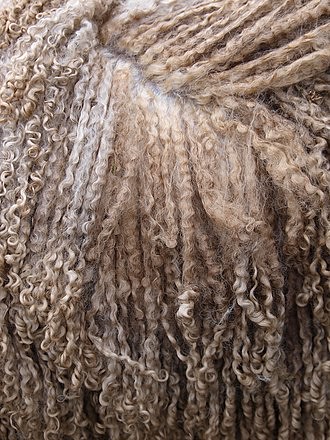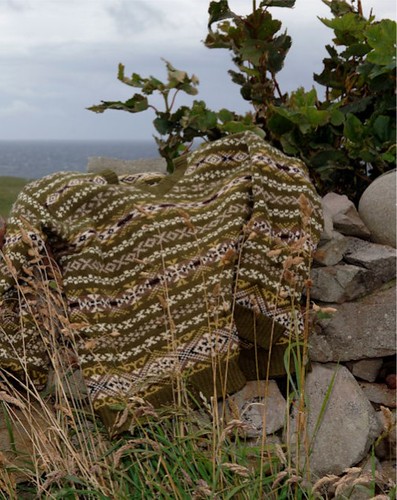Yes, you guessed it right: the fourth and last of this sheep breed” update this February is all about the gorgeous Wensleydale sheep breed from Yorkshire. But, before I start off to explain all about this breed I’ll give you a bit of insight what this week was for me.
Apart from the blending, prepping and getting all the fluffy stuff and dye pigments ready for this weeks and other updates, i did a little bit extra because I saw that the gothic tops were running a bit low on the website. I absolutely looooove that blend: super soft, dramatic deep black superfine merino and shiny mulberry silk. It is so fabulous to spin and, after some tweaking on how to dye this blend, I am having a ball with dyeing it too! Lots of colourways have been restocked on the website: just go to gothic tops in the what’s new section. Oh, and did I mention there are a few NEW colourways available ?! Go check them out 💚
So, what does a day look like for me in the dye room and how long do I spend there ? Well, that’s easy: all day…lol and after a day at the dye pots, I hop to the other kitchen and cook a meal, bake a bread, feed all the hungry animals and then…spend the rest of the evening custom spinning yarns, planning what needs to be done, emails, do some social media stuff (way too little marketing I’m told but who has time ?! Lololol) and packing orders…and then it’s bed time, where I normally spend lots of time staring at the ceiling, listening to the sounds of Paul snoring happily…lol
My sleeping inability is dismal at the best of times, but this week I made the huge mistake of opening up some emails, checking messages and comments I might have missed on social media and BANG! There they were….tons of abuse and bullying and shouting at me by fans of a certain animal rights organisation who shall not be named. I was stunned and of course I could not sleep at all that night.
I love animals, I treat animals with respect and love, but apparently because one shears a sheep and clip a bunny to relieve them from their fur, some say that is abusing them and instead, the wool should be thrown out and given back to the land…..
This ofcourse is not my first rodeo dealing with this kind of ..eh…stuff..When I was doing weekly craft markets I was called “KILLER!” More than once by members of said organisation. I know there are horrendous practices, particularly in China going on in regards to the farming of animals, but small farmers and hobby farmers only have the best in mind for their flock. Which brings me to this: if you have any questions about how small farmers get their wool ? Ask! Do your due diligence and most of all do not jump to conclusions. Well, now that’s off my chest..lol. Let’s have some fun exploring these incredibly curly Longwool sheep.
Look at those curls !
The Wensleydale is a British breed of domestic sheep.
It is named for the Wensleydale region of North Yorkshire, in the north of England, where it was bred in the early nineteenth century by cross-breeding a Dishley Leicester ram with local long-woolled sheep of a breed that is now extinct.
It has a blue-grey face and long purled wool, and is among the heaviest of British sheep breeds. It is an endangered breed, and is categorised as "at risk" by the Rare Breeds Survival Trust. It is often used as a ram breed to cross with other breeds to obtain market lambs, and for its high-quality wool. The Wensleydale has also played a part in creating the gorgeous Blue Faced Leicester Sheep with its lustrous wool. But, I digress….
The legend behind the origin of the breed tells us the story of a ram named Blue Cap which was born from the crossing between a Dishley Leicester and a – now-extinct – long-wool Yorkshire breed. Our sources describe Blue Clap as a ‘wild spirited’ and ‘outstanding animal’, that weighed over 230 kilos !, and bore the blue face and lustrous wool characteristic of the breed. Born in 1939 Blue Cap, was widely used by local farmers to improve their livestock by crossbreeding. By giving lambs consistently like himself, Blue Cap became the founding sire of the Wensleydale breed. The Wensleydale sheep quickly established itself as an excellent crossing breed providing with hardy, prolific animals and heavy milking ewes.
Beside these enviable qualities, Wensleydales also produce good quantity of lean meat, and a wool particularly lustrous and silky in appearance.
The breed was officially named in 1876 leading to the foundation of the Wensleydale Long Wool Sheep Association in 1920, which at its creation included 197 members and 3059 registered ewes. Despite its early popularity, British farming communities soon lost interest in Wensleydales. In 1967 the number of Wensleydales declined to only 18 registered flocks and 291 ewes. After the formation of the Rare Breeds Survival Trust in 1973 the breed was put on a critical list. Although it is still considered as a rare breed, thanks to the work of dedicated breeders, Wensleydales are once again established all over the UK, and have extended into Europe and North America, but unfortunately not in Australia.
Wensleydales classify as a ‘luster long wool’ breed i.e a long wool breed specifically selected for the sheen and brilliance of their fleece. Long wool sheep are naturally strong, hard-wearing and lustrous, however Wensleydales fleece presents a thinner fibre diameter and a longer staple length, which makes it softer and even more lustrous than most long wools.
It takes on average 15 months for a lamb to grow its full fleece. Once shorn it will never grow back as long again, thus most photos of Wensleydales with wool down to the ground are those of lambs that have kept their first fleece.
As Wensleydales do not produce any kemp, most of their raw fleece can be used for spinning, resulting in 5kg of usable wool per animal. Wensleydales are easily recognizable due to their extremely long fleece divided in well-defined curly locks, and their deep blue head and ears. Their head is broad and partly covered in fine wool. Both rams and ewes are polled and can be either black or white.
They are also distinctively tall and strongly built; ewes weigh on average 90 kg while the ram can go up to 135 kg, making the Wensleydale sheep one of the heaviest British breeds.
Wensleydale wool has the great advantage of being shiny, fairly soft and hard wearing. Yarns made from long wool are usually worsted spun, a spinning method than enhanced the natural properties of the Wensleydale fleece by adding some extra strength, softness and sheen to the finish product. Ultimately Wensleydale wool is a great fibre to knit with, if you want to prioritize the strength, drape and shine of your knitted garments.
I hope you are inspired to try spinning with these amazing shiny, colourful tops: it is a fabulous experience and I can’t wait to see all your Wensleydale spinning adventures !
Have a fabulous weekend!
hugs
Charly











